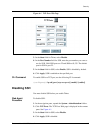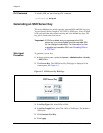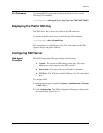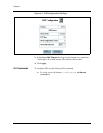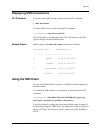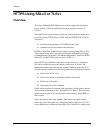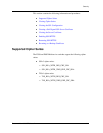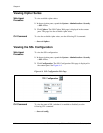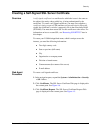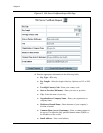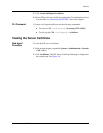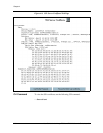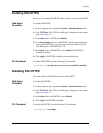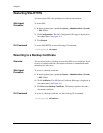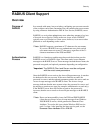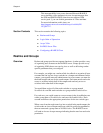
Document No. 10-300077, Issue 2 4-13
Security
Creating a Self-Signed SSL Server Certificate
Overview A self-signed certificate is a certificate for which the issuer is the same as
the subject (the entity whose public key is being authenticated by the
certificate). To create a self-signed certificate, you must first complete a
certificate signing request (CSR) and then you can self-sign it. Once self-
signed, the certificate is saved to a temporary file in the nonvolatile RAM
(NVRAM). You must then restart SSL for the certificate to take effect. For
information on how to restart SSL, see “Restarting SSL/HTTPS” later in
this chapter.
To create your X.500 distinguished name, which is unique across the
internet, you need the following information:
■ Two-digit country code
■ State or province (full name)
■ City
■ Organization or company name
■ Division or branch name
■ Common name (host name of the server)
■ E-mail address
Web Agent
Procedure
To create a self-signed certificate:
1. In the navigation pane, expand the System > Administration > Security
> SSL folders.
2. Click Certificates. The SSL Server Certificate Web page is displayed in
the content pane. See Figure 4-6.
3. Click Certificate Request. The SSL Server Certificate Request Web
page is displayed in the content pane. See Figure 4-5.



